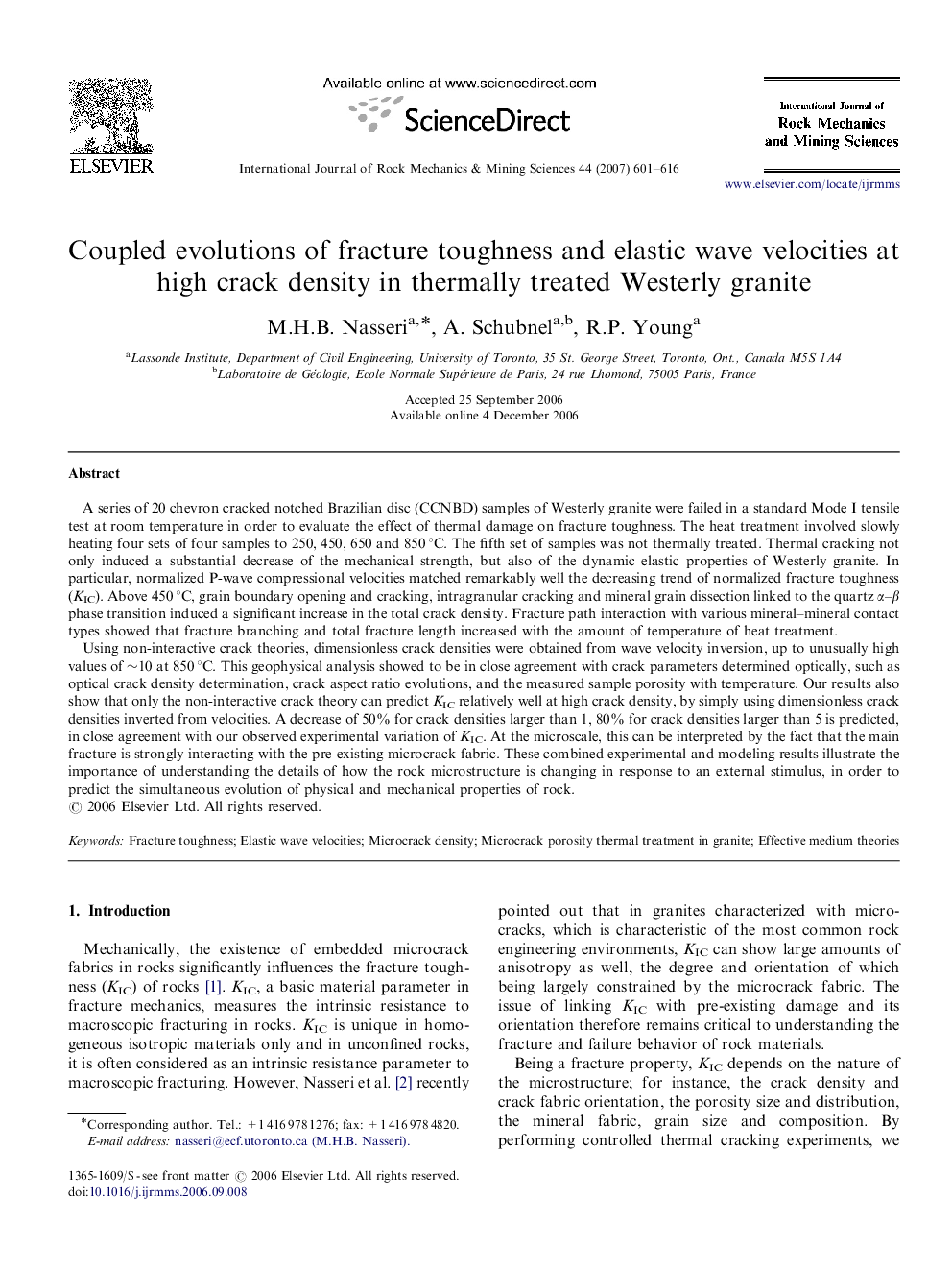| کد مقاله | کد نشریه | سال انتشار | مقاله انگلیسی | نسخه تمام متن |
|---|---|---|---|---|
| 810332 | 1468757 | 2007 | 16 صفحه PDF | دانلود رایگان |

A series of 20 chevron cracked notched Brazilian disc (CCNBD) samples of Westerly granite were failed in a standard Mode I tensile test at room temperature in order to evaluate the effect of thermal damage on fracture toughness. The heat treatment involved slowly heating four sets of four samples to 250, 450, 650 and 850 °C. The fifth set of samples was not thermally treated. Thermal cracking not only induced a substantial decrease of the mechanical strength, but also of the dynamic elastic properties of Westerly granite. In particular, normalized P-wave compressional velocities matched remarkably well the decreasing trend of normalized fracture toughness (KIC). Above 450 °C, grain boundary opening and cracking, intragranular cracking and mineral grain dissection linked to the quartz α–β phase transition induced a significant increase in the total crack density. Fracture path interaction with various mineral–mineral contact types showed that fracture branching and total fracture length increased with the amount of temperature of heat treatment.Using non-interactive crack theories, dimensionless crack densities were obtained from wave velocity inversion, up to unusually high values of ∼10 at 850 °C. This geophysical analysis showed to be in close agreement with crack parameters determined optically, such as optical crack density determination, crack aspect ratio evolutions, and the measured sample porosity with temperature. Our results also show that only the non-interactive crack theory can predict KIC relatively well at high crack density, by simply using dimensionless crack densities inverted from velocities. A decrease of 50% for crack densities larger than 1, 80% for crack densities larger than 5 is predicted, in close agreement with our observed experimental variation of KIC. At the microscale, this can be interpreted by the fact that the main fracture is strongly interacting with the pre-existing microcrack fabric. These combined experimental and modeling results illustrate the importance of understanding the details of how the rock microstructure is changing in response to an external stimulus, in order to predict the simultaneous evolution of physical and mechanical properties of rock.
Journal: International Journal of Rock Mechanics and Mining Sciences - Volume 44, Issue 4, June 2007, Pages 601–616